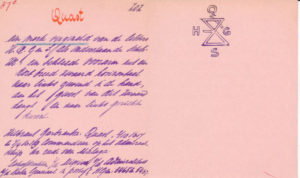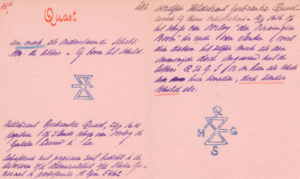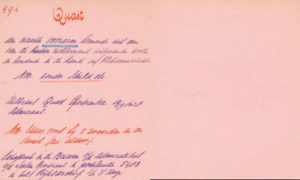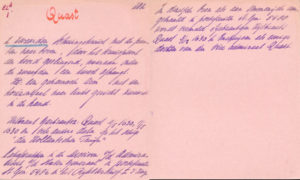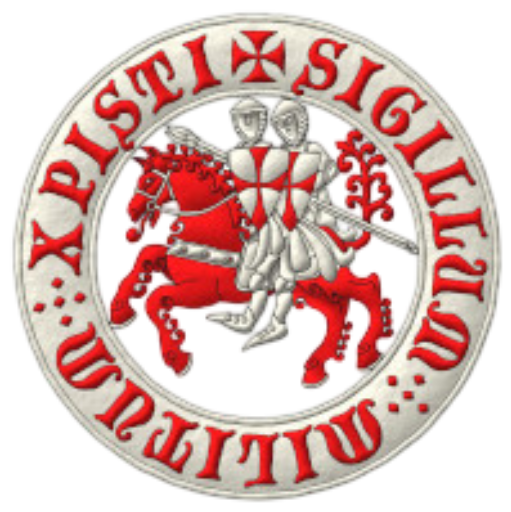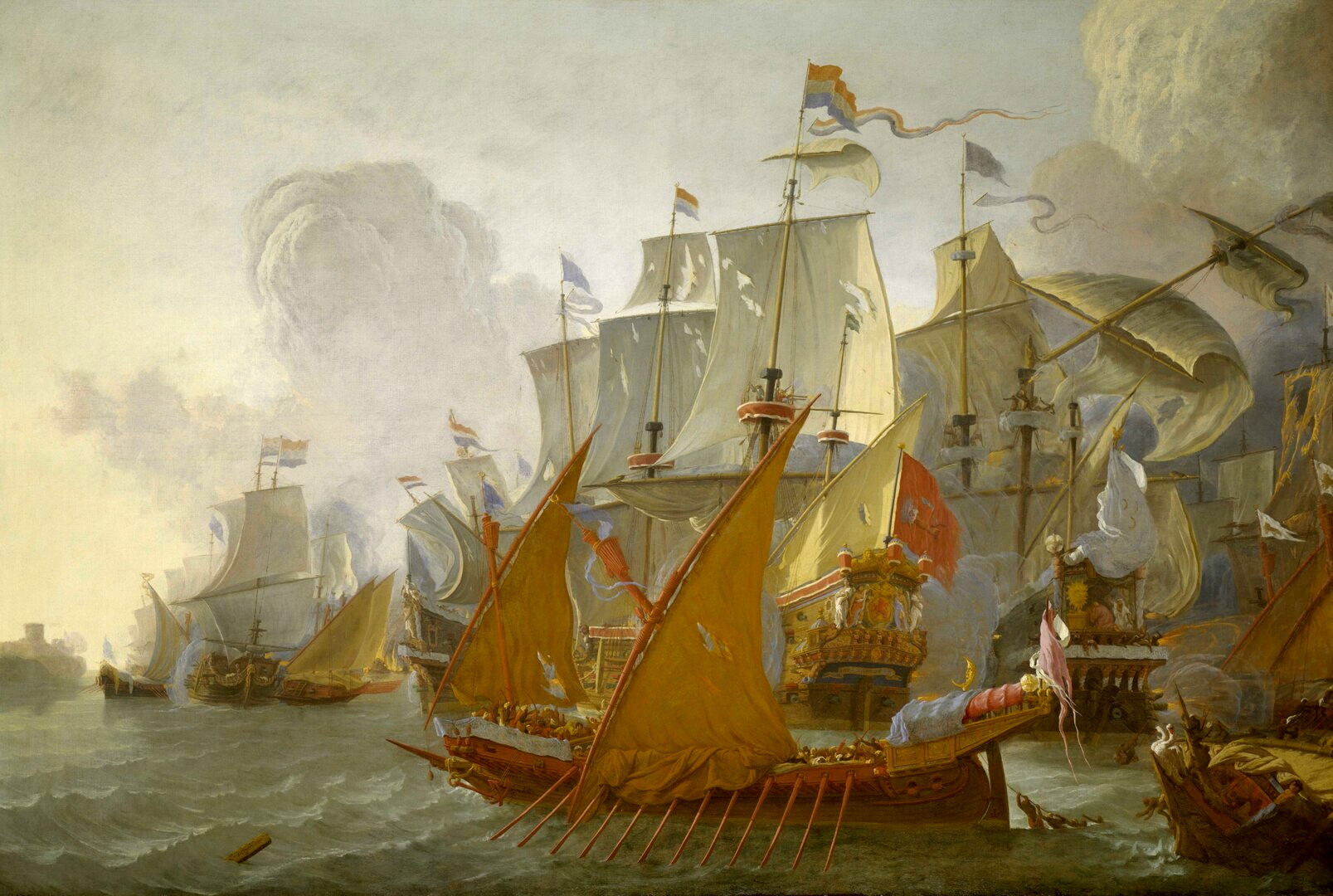Hillebrand Gerritsz. Quast, of Enkhuizen, was commander of the admiralty of the Northern Quarter, with the Heemskerck fleet in 1607 as commander of a ship from Enkhuizen, and took part in the battle of Gibraltar. He became commander of three ships in 1612 to cruise on the Barbary pirates; in the following years, too, he was employed for the same purpose in the Mediterranean Sea as commander of a squadron, which was 15 ships strong in 1617, and 25 ships the next year; he avoided a few robber ships and freed many Christian slaves. Personally, he commanded the ship the ‘Oranjeboom’ in 1616, and ”t Hoen’ a ship of Enkhuizen in 1620. His activity then shifted to the North Sea and the Flanders coast to fight the Dunkirkers, and in 1626 he was commander of a squadron to close the port of Dunkirk. In March 1627 near Portland, he summoned the captains of his squadron and agreed with them not to apply the right of footwashing, although a year earlier the captains had sworn to throw the captured Dunkirkers overboard, but the Admiralty of the Northern Quarter had not reinstated this oath. This behaviour by Commander Quast led to a consultation between the stadholder and the deputies of the admiralty, in which it was decided that the footwashing should be applied in retaliation against the Dunkirk, except for passengers, boys and fishermen, the latter however only insofar as they themselves had not thrown their prisoners overboard.
In spring 1628 Quast again commandeered a Dunkirk, manned by 90 men, but again did not apply the footwashing, which was criticised by some but had no negative consequences for him. Under the influence of the leadership of men like Piet Hein, Maarten Harpertsz Tromp and Hillebrand Quast, the method of warfare changed; the order of footwashing was never withdrawn, but was gradually applied less and, after the capture of Dunkirk by the French, automatically fell into disuse.
In 1629, Quast served as commander on the fleet under Piet Hein’s supreme command; personally, he commanded the ship ‘de Hollandsche Thuyn’ of the admiralty of the North Quarter, which ship large 180 cargoes, was armed with 18 metal pieces, 14 gutters and 6 stone pieces, and manned with 90 sailors and 30 musketeers. After Piet Hein’s death, the supreme command of the fleet temporarily passed to Quast, until a new lieutenant admiral was appointed.
In 1631, he was again at sea as commander with a fleet to guard the Flanders coast.
- Translation from Nieuw Nederlands Biografisch Woordenboek (NNBW)
Sources:
- Staat van oorlog bij de admiraliteit van het Noorder- Kwartier 1629; de Jonge, Geschiedenis van het zeewezen; Brandt, Beschrijving van Enkhuizen; Jan Olers, Oorlogsdaden van Prins Maurits 1619.
